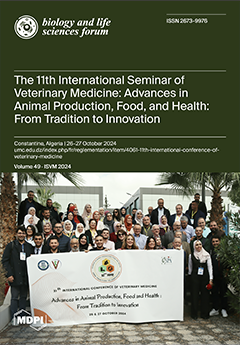Osbana, also known as
Osbane, is a cooked sausage-like product prepared from edible by-products and is one of the most popular Algerian traditional meat products. However, there is a lack of knowledge regarding its culinary preparation and consumption habits. Therefore, this study explores these aspects within the Algerian population. Using an online questionnaire, we surveyed the people who prepare (
n = 581) along with those who consume
Osbana (
n = 928 consumers). The survey allowed us to establish a preparation diagram of
Osbana following the traditional methods involving cleaning, boiling, confecting balls/sausages, cutting, seasoning, stuffing, closing balls/sausages, conserving, and cooking. Overall, the results showed that
Osbana is usually prepared from lamb, using mainly white offal (intestines, stomach, and lungs) as the main component, generally stuffed in a cleaned rumen that is not scraped of its dark layer. The rough side of the rumen is frequently put on the outside of the balls/sausages. However, regional variations in its preparation have been observed.
Osbana seemed to be well appreciated by 51.7% of respondents, owing to its typical sensory properties. Interestingly, it is frequently consumed at home, at most 3 times a year (79% of consumers), but mainly served during religious and social celebrations, especially for Eid El-Adha. The common dishes used for its consumption depend on the region, but overall, it is consumed with
Couscous or in a sauce. Variations in the preparation of
Osbana influence the way it is consumed, hence creating typical recipes in each region. Also, these differences in its preparation may lead to differences in its nutritional and sensory properties, which require further investigation.
Full article



